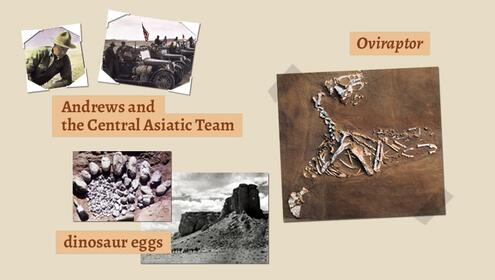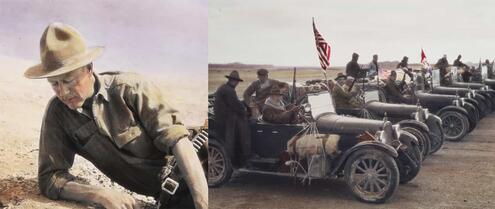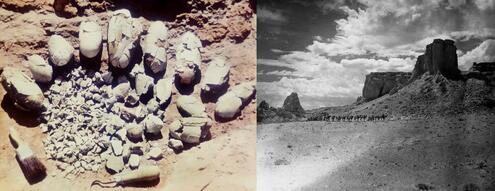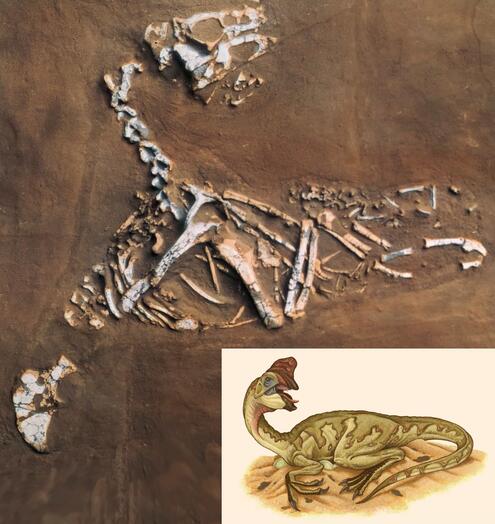
Click the ( + ) signs to explore the items in our scrapbook.

In the 1920s, Roy Chapman Andrews, a naturalist and explorer at the American Museum of Natural History, had heard from Russian scientists that the Gobi was an amazing place to hunt for fossils. So this real-life Indiana Jones organized a team of scientists to go there.


Andrews and the Central Asiatic team
Andrews’s original goal was to find fossils of human ancestors. Even though his team didn’t find any early human fossils, they did make some remarkable discoveries.


dinosaur eggs
In 1923, among the red-orange sand dunes known as the Flaming Cliffs, a team member found the first recognized non-avian dinosaur eggs. Andrews guessed that the eggs were Protoceratops, the most common type of dinosaur fossil in the area.
Oviraptor
Roy Chapman Andrews found this specimen of Oviraptor. A surprise awaited his team when they dug it up: Four inches below the animal was a nest of eggs! Andrews gave the dinosaur the name Oviraptor, which means "egg robber." Years later, scientists understood the Oviraptor was brooding the eggs, not preying on them. The scientific illustration by Ed Heck shows how a closely related dinosaur, Citipati, would have looked sitting on its own nest.

Image Credits:
All photos, courtesy of AMNH; Oviraptor illustration, Ed Heck/ AMNH




 Biodiversity
Biodiversity
 Brain
Brain
 Genetics
Genetics
 Marine BiOLogy
Marine BiOLogy
 MicrobiOLogy
MicrobiOLogy
 PaleontOLogy
PaleontOLogy
 ZoOLogy
ZoOLogy
 AnthropOLogy
AnthropOLogy
 ArchaeOLogy
ArchaeOLogy
 Astronomy
Astronomy
 Climate Change
Climate Change
 Earth
Earth
 Physics
Physics
 Water
Water

